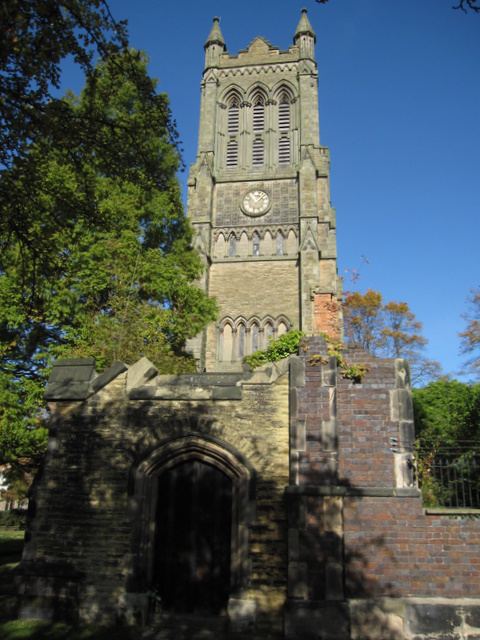OS grid reference SJ 706 556 Reference no. 1138680 | Designated 14 June 1984 | |
 | ||
Similar Coppenh Saint Michael, St Mary's RC Church, West Street Christian Fellowship, Union Street Baptist C, All Saints Parish Church | ||
Christ Church Tower stands in Prince Albert Street, Crewe, Cheshire, England. Associated with it are the ruins of a former parish church. The tower is recorded in the National Heritage List for England as a designated Grade II listed building.
Contents
History
Christ Church was built for the Grand Junction Railway in 1843, and was almost certainly designed by John Cunningham. The church was consecrated on 18 December 1845 by the Rt Revd John Bird Sumner, Bishop of Chester. Aisles were added in 1864, and the tower in 1877. The tower was designed by the railway company's engineer, J. W. Stansby. The chancel was added in 1898, and a chapel in 1906. In the 1970s the nave was demolished due to dry rot, with the tower and baptistry being declared redundant on 1 June 1980. However, services continued to be held in the rest of the building until November 2013.
Architecture
The tower is constructed in yellow sandstone with angle buttresses. It has a west door above which is a hood mould, its stops carved with faces. Over this is a window containing Geometric tracery. Higher on the tower are more windows, some of which are lancets, and others have trefoil heads. On each side of the tower are clock faces, which are set in diapered panels. The top stage contains louvred triple-lancet bell openings. On the summit of the tower is a stepped and gabled parapet, with octagonal crocketed pinnacles at the corners. Originally the tower had an iron crown that had been made in the railway workshops. In the tower is a ring of ten bells, all of which were cast in 1912 by Gillett & Johnston. Some of the ruined walls of the church remain, including red brick fragments from the chancel. A garden has been created within the walls, which contains a pair of octagonal iron piers, the former supports of the galleries.
